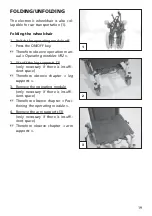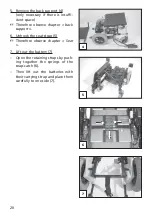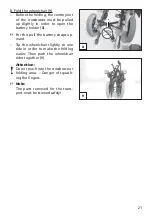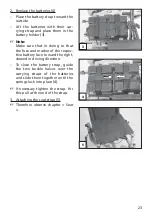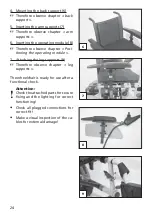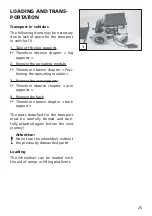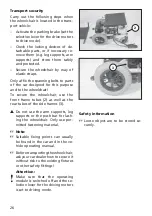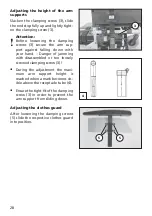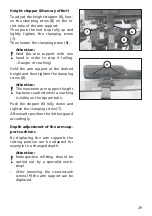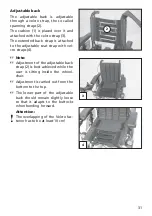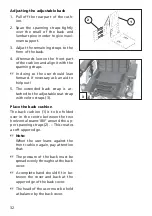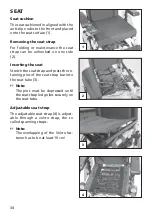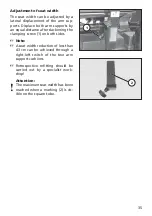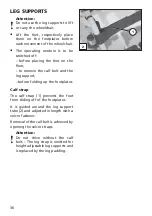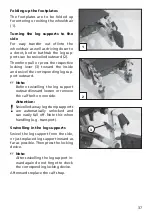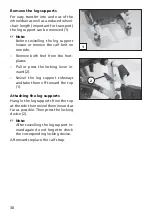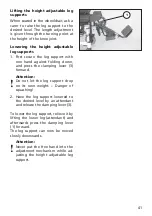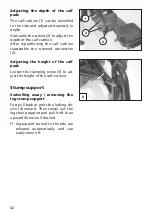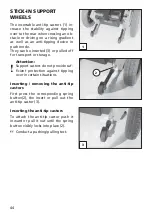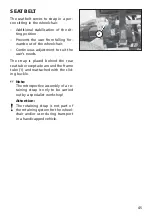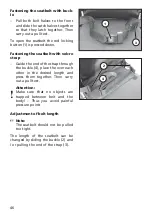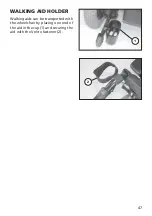
1
2
3
32
Adjusting the adjustable back
1. Pull off the rear part of the cush-
ion.
2. Span the spanning straps tightly
over the small of the back and
lumbar spine in order to give maxi-
mum support.
3. Adjust the remaining straps to the
form of the back.
4. Afterwards loosen the front part
of the cushion and align it with the
spanning straps.
☞
In doing so the user should lean
forward. If necessary ask an aid to
help out!
5. The extended back strap is at-
tached to the adjustable seat strap
with velcro straps (3).
Place the back cushion
The back cushion (1) is to be folded
over in the centre between the two
horizontal seams 180° around the up-
per spanning straps (2). – This creates
a soft upper edge.
☞
Note:
When the user leans against the
front cushion again, pay attention
that:
☞
The pressure of the back must be
spread evenly throughout the back
cover.
☞
A complete hand should fi t in be-
tween the cover and back at the
upper edge of the back cover.
☞
The head of the user must be held
at balance by the back cover.


